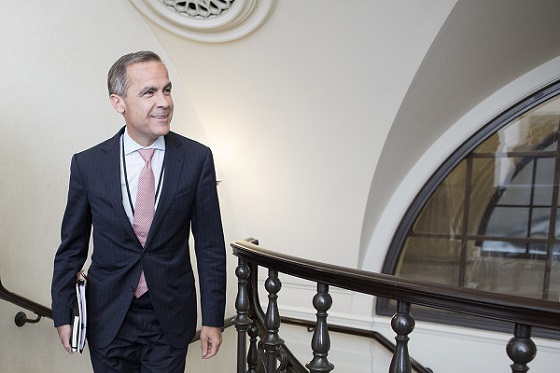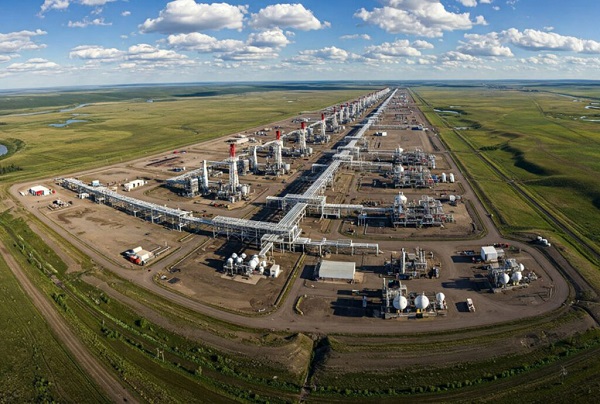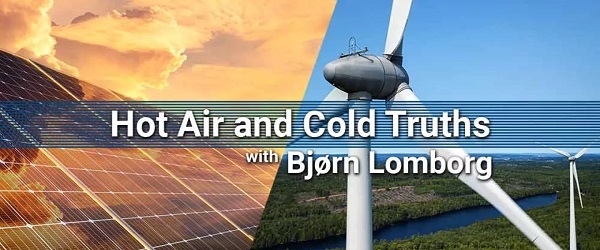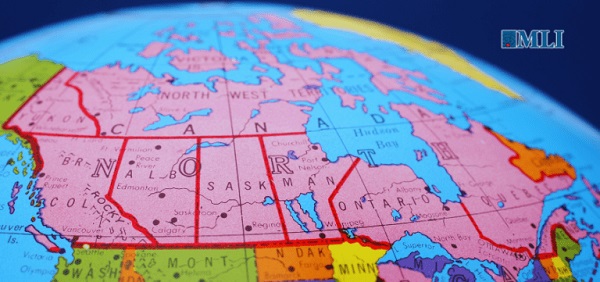Energy
Trump’s tariffs made Ottawa suddenly start talking about new east-to-west pipelines, but how long will it last?

For years, oil pipelines have been a political fault line in Canada, with battles over environmental policies, economic development and national energy security. The Liberal government under Prime Minister Justin Trudeau, has sent mixed signals – championing climate goals while approving some energy projects like the Trans Mountain Expansion. But now, with a trade war looming over Canada, a surprising shift has occurred: a consensus across the political spectrum in favour of building new pipelines.
And it’s all due to one man: United States President Donald Trump.
Trump’s threat to impose a 10 percent tariff on Canadian energy and 25 percent on other Canadian exports has woken up Ottawa. Previously, Trudeau’s government made decisions that killed off big pipeline projects like Energy East. Bill C-69 was blamed for creating an uncertain regulatory environment that discouraged investment in pipelines.
But now, Liberal ministers are talking about revisiting those projects.
On February 6, Energy Minister Jonathan Wilkinson, a long-time climate crusader, surprised many when he said Canada is too dependent on the U.S. as an oil buyer and suggested Ottawa should consider a pipeline to Eastern Canada to diversify energy exports. He’d made similar comments in September and October 2024 when he said oil demand had peaked and pipelines were unnecessary.
The next day, it was reported that Industry Minister François-Philippe Champagne followed Wilkinson’s lead, saying Canada must reassess its energy infrastructure given Trump’s threat. He even suggested Quebec, which has long opposed pipelines, might be open to reconsidering Energy East.
Shortly after, Alberta Premier Danielle Smith seized the moment, urging Ottawa to restart talks on national energy infrastructure.
And then on February 9, Champagne again said Quebecers might have a different view on pipelines now that their economic security is at stake.
This is a stunning reversal. Just months ago Wilkinson and other Liberal officials were saying oil demand was declining and Canada should focus on renewables and electrification.
However, is this a real policy shift?
While some senior Liberals are suddenly in favour of pipelines, one key figure has been silent: Mark Carney, the front runner in the Liberal leadership race.
Carney has made climate action a central plank of his campaign, but says he supports the “concept” of an east-west pipeline.
His silence raises a big question: Are the Liberals really in favour of oil pipelines or is this just a reaction to Trump?
Despite Carney, Wilkinson and Champagne’s comments, big industry players remain skeptical. Pipeline projects take years of regulatory approval, billions of investment and political will at both the federal and provincial level. The Trudeau government’s track record has been one of obstacles, not encouragement, for big energy projects.
And some experts say pipeline companies may not be keen to jump back into the fray. TC Energy, the former proponent of Energy East, divested its oil pipeline business in 2023. Would a new pipeline proponent be willing to navigate the regulatory and political minefield that Ottawa itself created?
The political fallout could be immense.
If the Liberals go for pipelines, it will be one of the biggest policy reversals in Canadian energy history. It will also expose deep divisions within the party. Environmental groups and Liberal voters in urban centres will likely rage against such a shift while oil-producing provinces like Alberta and Saskatchewan will remain skeptical of Ottawa’s new enthusiasm.
Meanwhile the Conservative Party, the only federal party that has always been in favour of pipelines, will find itself in an unusual position—watching the Liberals adopt its policies as their own.
In the next few weeks all eyes will be on Carney and the Liberal leadership race. If Carney keeps hedging on pipelines, it will be unclear if this new consensus is real or just political expediency in the face of Trump’s tariffs.
For now Canada’s pipeline debate is no longer about energy or the environment—it’s about sovereignty, trade and survival in an uncertain global economy. Will this consensus last beyond the immediate crisis?
Economy
Clearing the Path: Why Canada Needs Energy Corridors to Compete

From Energy Now
Originally published by Canada Powered by Women
-
Keystone XL ($8 billion), cancelled in 2021
-
Energy East ($15.7 billion), cancelled in 2017
-
Northern Gateway ($7.9 billion), cancelled in 2016
These projects were cancelled due to regulatory challenges, environmental opposition, and shifting political decisions on both sides of the border. This left Canada without key infrastructure to support energy exports.
For years, companies have tried to build the infrastructure needed to move Canadian oil and gas across the country and to sell to global markets. Billions of dollars have been invested in projects that never materialized, stuck in regulatory limbo, weighed down by delays, or cancelled altogether.
The urgency of this issue is growing.
Last week, 14 CEOs from Canada’s largest pipeline and energy companies issued an open letter urging federal leaders from all parties to streamline regulations and establish energy corridors, warning that delays and policy uncertainty are driving away investment and weakening Canada’s position in global energy markets.
The U.S. recently imposed tariffs on Canadian energy, adding new pressure to an already lopsided trade relationship. According to the 2024-2025 Energy Fact Book from Natural Resources Canada, the U.S. accounted for 89% of Canada’s energy exports by value, totalling $177.3 billion. This leaves the economy vulnerable to shifts in American policy. Expanding access to other buyers, such as Japan, Germany, and Greece, would help stabilize and grow the economy, support jobs, and reduce reliance on a single trading partner.
At the heart of this challenge is infrastructure.
Without reliable, efficient ways to move energy, Canada’s ability to compete is limited. Our existing pipelines run north-south, primarily serving the U.S., but we lack the east-west capacity needed to supply our own country and to diversify exports. Energy corridors (pre-approved routes for major projects) would ensure critical infrastructure is built fast, helping Canada generate revenue from its own resources while lowering costs and attracting investment.
This matters for affordability and reliability.
Our research shows engaged women are paying close attention to how energy policies affect their daily lives — 85 per cent say energy costs impact their standard of living, and 77 per cent support the development and export of liquefied natural gas (LNG) to help provide energy security and to generate revenue for Canada.
With increasing concern over household expenses, food prices, and economic uncertainty, energy corridors have become part of the conversation about ensuring long-term prosperity.
What are energy corridors, and why do they matter?
Energy corridors are designated routes for energy infrastructure such as pipelines, power lines, and transmission projects. With an energy corridor, environmental assessments and stakeholder consultations are completed in advance, allowing development to proceed without ongoing regulatory hurdles which can become costly and time consuming. This provides certainty for energy projects, reducing delays, lowering costs, and encouraging investment. They are also not a new concept and are applied in other parts of the world including the U.S.
In Canada, however, this isn’t happening.
Instead, each project must go through an extensive regulatory process, even if similar projects have already been approved. Energy companies spend years trying to secure approvals that don’t come to fruition in a reasonable time and as a result projects are cancelled due to sky-rocketing costs.
“Getting regulatory approval for energy transportation projects in Canada takes so long that investors are increasingly looking elsewhere,” said Krystle Wittevrongel, director of research at the Montreal Economic Institute. “Energy corridors could help streamline the process and bring back much-needed investment to our energy industry.”

Jackie Forrest, executive director at the ARC Energy Research Institute, pointed out that the time it takes to get projects approved is a major factor in driving investment away from Canada to other countries.
“Projects are taking five or more years to go through their regulatory review process, spending hundreds of millions if not a billion dollars to do things like environmental assessments and studies that sometimes need to be carried out over numerous seasons,” she said.
The cost of missed projects
Over the past decade, multiple major energy projects in Canada have been cancelled or abandoned. Among them:
- Keystone XL ($8 billion), cancelled in 2021
- Energy East ($15.7 billion), cancelled in 2017
- Northern Gateway ($7.9 billion), cancelled in 2016
These projects were cancelled due to regulatory challenges, environmental opposition, and shifting political decisions on both sides of the border. This left Canada without key infrastructure to support energy exports.
LNG projects have faced similar setbacks. More than a dozen LNG export proposals were once on the table, but these same issues made most of these projects not viable.
Meanwhile, the United States rapidly expanded its LNG sector, now exporting far more than Canada, capturing global markets that Canada could have served.
“Ten to 15 years ago, there were about as many LNG projects proposed in Canada as in the U.S.,” said Forrest. “We have not been able to get those projects going. The first Canadian project is just starting up now, while the Americans are already shipping out far more.”
She cited a report that shows LNG development in the U.S. has added $408 billion to GDP since 2016 and created 270,000 direct jobs.
“That’s a major economic impact,” she said. “And Canada hasn’t been able to take part in it.”
The case for energy corridors: Creating prosperity, keeping costs in check
Energy corridors could help Canada build long-term prosperity while addressing affordability, job creation, and energy reliability.
“More efficient infrastructure reduces supply chain delays, helping to lower consumer energy costs and related expenses like food and transportation,” said Wittevrongel.
Wittevrongel notes that projects that cross provincial borders face both provincial and federal impact assessments which leads to duplication of effort and delays. Reducing this overlap would shorten approval timelines and provide more certainty for investors.
“One of the ways to improve this process is having the federal government recognize provincial environmental assessments as being good enough,” she said. “There has to be a way to balance that.”
Forrest said investors have already taken note of Canada’s high project costs and long approval timelines.
“TC Energy just built a pipeline to connect the BC gas fields with the West Coast that cost about twice as much as originally expected and took a lot longer,” she said. “Meanwhile, they recently completed a $4.5-billion natural gas project in Mexico under budget and ahead of schedule. Now they’re looking at where to put their next investment.”
Forrest explained that energy corridors could help de-risk infrastructure projects by front-loading environmental and stakeholder work.
“If we just had a pre-approved corridor for things like pipelines and transmission lines to go through, where a lot of this groundwork had already been done, it would really reduce the timeline to get to construction and reduce the risk,” she said. “That would hopefully get a lot more capital spent more quickly in this country.”

The path forward
Without changes, investment will continue to flow elsewhere.
“Energy corridors can go a long way to restoring Canada’s attractiveness for energy transportation and infrastructure projects as it cuts down on the lengthy bureaucratic requirements,” said Wittevrongel.
And Forrest agrees.
“We need to pick key projects that are going to be important to the sovereignty and economic future of Canada and get them done,” Forrest said. “I don’t think we can wait for long-term legislative reform — we need to look at what the Americans are doing and do something similar here.”
Energy corridors are about ensuring Canada remains competitive, lowering costs for consumers, and creating the infrastructure needed to support long-term economic prosperity.
For engaged women, this translates into a stronger economy, lower costs, and more reliable energy for their families.
“The two areas that this will be felt for every family are in lower energy costs and also in lower grocery or food prices as transportation of these things becomes easier on rail, or exporting grain reduces the price, for instance, ” said Wittevrongel.
Whether policymakers take action remains to be seen, but with growing trade pressures and investment uncertainty, the conversation around energy corridors is needed now more than ever.
Economy
Support For National Pipelines And LNG Projects Gain Momentum, Even In Quebec

From the Frontier Centre for Public Policy
Public opinion on pipelines has shifted. Will Ottawa seize the moment for energy security or let politics stall progress?
The ongoing threats posed by U.S. tariffs on the Canadian economy have caused many Canadians to reconsider the need for national oil pipelines and other major resource projects.
The United States is Canada’s most significant trading partner, and the two countries have enjoyed over a century of peaceful commerce and good relations. However, the onset of tariffs and increasingly hostile rhetoric has made Canadians realize they should not be taking these good relations for granted.
Traditional opposition to energy development has given way to a renewed focus on energy security and domestic self-reliance. Over the last decade, Canadian energy producers have sought to build pipelines to move oil from landlocked Alberta to tidewater, aiming to reduce reliance on U.S. markets and expand exports internationally. Canada’s dependence on the U.S. for energy exports has long affected the prices it can obtain.
One province where this shift is becoming evident is Quebec. Historically, Quebec politicians and environmental interests have vehemently opposed oil and gas development. With an abundance of hydroelectric power, imported oil and gas, and little fossil fuel production, the province has had fewer economic incentives to support the industry.
However, recent polling suggests attitudes are changing. A SOM-La Presse poll from late February found that about 60 per cent of Quebec residents support reviving the Energy East pipeline project, while 61 per cent favour restarting the GNL Quebec natural gas pipeline project, a proposed LNG facility near Saguenay that would export liquefied natural gas to global markets. While support for these projects remains stronger in other parts of the country, this represents a substantial shift in Quebec.
Yet, despite this change, Quebec politicians at both the provincial and federal levels remain out of step with public opinion. The Montreal Economic Institute, a non-partisan think tank, has documented this disconnect for years. There are two key reasons for it: Quebec politicians tend to reflect the perspectives of a Montreal-based Laurentian elite rather than broader provincial sentiment, and entrenched interests such as Hydro-Québec benefit from limiting competition under the guise of environmental concerns.
Not only have Quebec politicians misrepresented public opinion, but they have also claimed to speak for the entire province on energy issues. Premier François Legault and Bloc Québécois Leader Yves-François Blanchet have argued that pipeline projects lack “social licence” from Quebecers.
However, the reality is that the federal government does not need any special license to build oil and gas infrastructure that crosses provincial borders. Under the Constitution, only the federal Parliament has jurisdiction over national pipeline and energy projects.
Despite this authority, no federal government has been willing to impose such a project on a province. Quebec’s history of resisting federal intervention makes this a politically delicate issue. There is also a broader electoral consideration: while it is possible to form a federal government without winning Quebec, its many seats make it a crucial battleground. In a bilingual country, a government that claims to speak for all Canadians benefits from having a presence in Quebec.
Ottawa could impose a national pipeline, but it doesn’t have to. New polling data from Quebec and across Canada suggest Canadians increasingly support projects that enhance energy security and reduce reliance on the United States. The federal government needs to stop speaking only to politicians—especially in Quebec—and take its case directly to the people.
With a federal election on the horizon, politicians of all parties should put national pipelines and natural gas projects on the ballot.
Joseph Quesnel is a senior research fellow with the Frontier Centre for Public Policy.
-

 Business21 hours ago
Business21 hours ago28 energy leaders call for eliminating ALL energy subsidies—even ones they benefit from
-

 2025 Federal Election22 hours ago
2025 Federal Election22 hours agoCarney’s Cap on Alberta Energy Costing Canada Billions
-

 Business23 hours ago
Business23 hours agoTrump Tariffs are not going away. Canada needs to adapt or face the consequences
-

 Economy15 hours ago
Economy15 hours agoSupport For National Pipelines And LNG Projects Gain Momentum, Even In Quebec
-

 Health19 hours ago
Health19 hours agoDr. Pierre Kory Exposes the Truth About the Texas ‘Measles Death’ Hoax
-

 Economy16 hours ago
Economy16 hours agoSolar and Wind Power Are Expensive
-

 Business18 hours ago
Business18 hours agoAll party leaders must oppose April 1 alcohol tax hike
-

 Business17 hours ago
Business17 hours agoWhy a domestic economy upgrade trumps diversification

